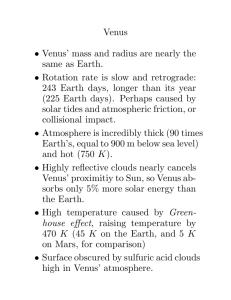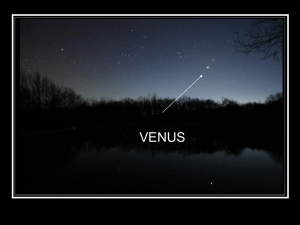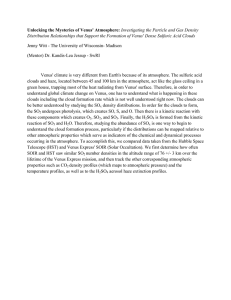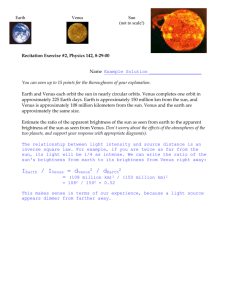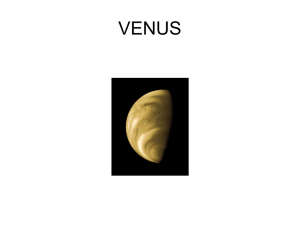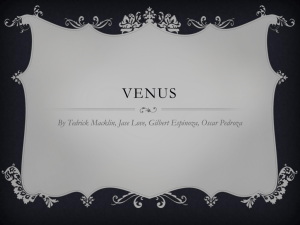8th orange ppt
advertisement
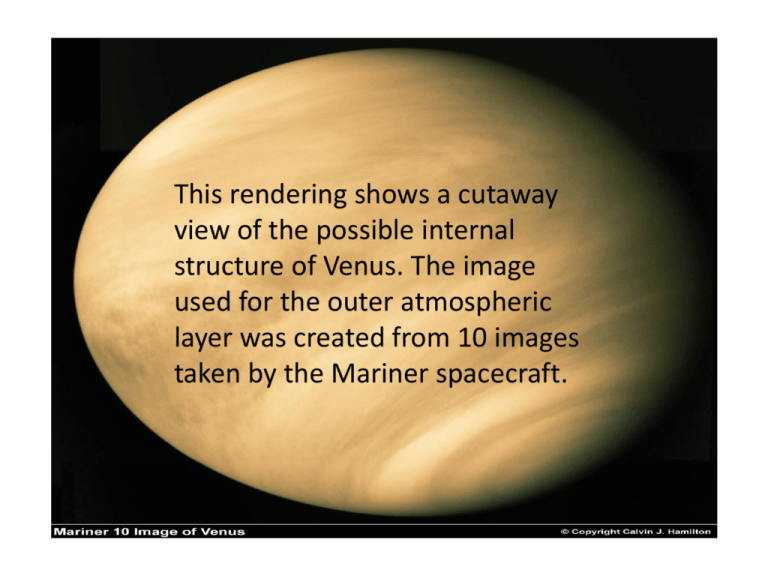
This rendering shows a cutaway view of the possible internal structure of Venus. The image used for the outer atmospheric layer was created from 10 images taken by the Mariner spacecraft. Venus Inside and Out • Venus is the second planet from the Sun, and is Earth's closest neighbor in the solar system. Venus is the brightest object in the sky after the Sun and the Moon, and sometimes looks like a bright star in the morning or evening sky. The planet is slightly smaller than Earth, and its interior is similar to Earth. Venus inside and out • We can't see the surface of Venus from Earth, because it is covered with thick clouds that strongly reflect sunlight. However, space missions to Venus have shown us that its surface is covered with craters, over 1600 major volcanoes, mountains, large highland terrains, and vast lava plains. The surface of Venus is not where you'd like to be, with temperatures reaching more than 450C (approaching 900F - high enough to melt lead), an atmosphere 90 times heavier than our own, and clouds of sulfuric acid floating around to top it off! The atmosphere of Venus is composed of about 96% carbon dioxide, with most of the remainder being nitrogen. The atmosphere appears to be relatively clear until the cloud deck starts about 50 km above the surface. The clouds are composed of sulphuric acid and various other corrosive compounds, and the atmosphere contains little water. Video • https://www.google.com/url?sa=t&rct=j&q=& esrc=s&source=video&cd=1&cad=rja&uact=8 &ved=0CB0QtwIwAA&url=http%3A%2F%2Fw ww.youtube.com%2Fwatch%3Fv%3D76m7YM arYp0&ei=7H4tVcyJGISpNoClgKAF&usg=AFQjC NGi19O9ZUAP6sPMJOt3pBaYBFdH_w&bvm=b v.90790515,d.eXY This rendering shows a cutaway view of the possible internal structure of Venus. The image used for the outer atmospheric layer was created from 10 images taken by the Mariner spacecraft.


